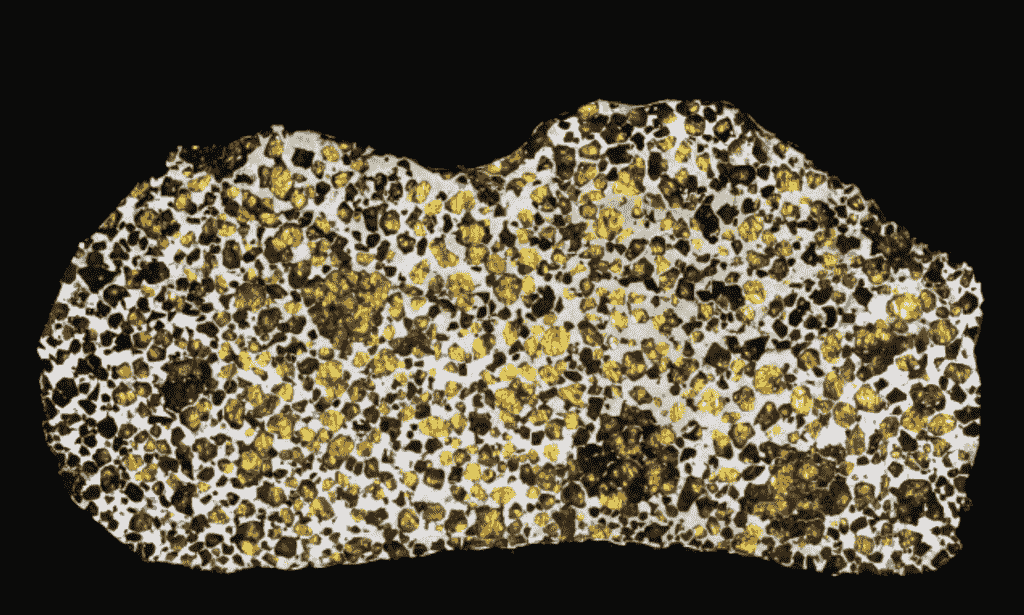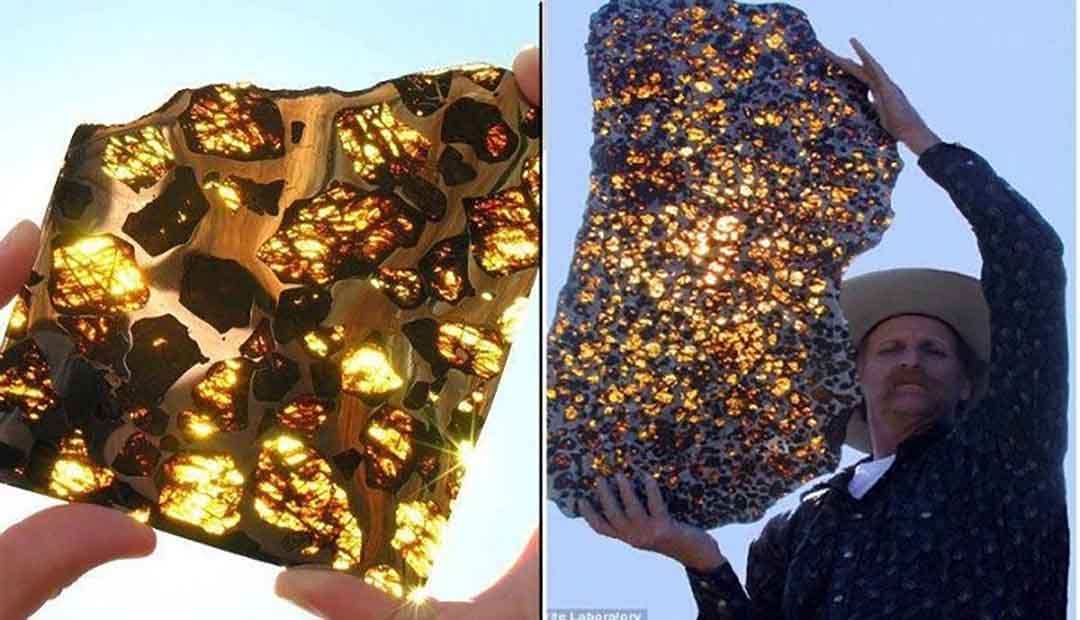The Fukang Meteorite: A Stunning Discovery of Earth’s Most Amazing Meteorite
When the Fukang meteorite came soaring through the Earth’s atmosphere and crashed on the ground, it showed little sign of beauty. Then they opened it.
Undoubtedly the world’s most amazing meteorite landed was found in China in 2000. It crashed into a mountain range near Fukang, China, which is where it earned its name.
When it slammed into the surface of Earth, there was little sign of the beauty that lay inside. But cutting the Fukang meteorite open yielded a breathtaking sight.
Within the rock, translucent golden crystals of a mineral called olivine gleamed among a silvery honeycomb of nickel-iron.
The rare meteorite weighed about the same as a hatchback when it was discovered in 2000, in the Gobi Desert in China’s Xinjiang Province.
It has since been divided into slices which give the effect of stained glass when the sun shines through them.

An anonymous collector holds the largest portion, which weighs 925lb. in 2008, this piece was expected to fetch $ 2 million (£ 1.26 million) at auction at Bonham’s in New York – but it remained unsold.
It is so valuable that even tiny chunks sell in the region of £20-30 per gram.
Arizona’s Southwest Meteorite Laboratory, which holds about 70lb of the rock, says the remarkable find will turn out to be ‘one of the greatest meteorite discoveries of the 21st century’.
It says the Fukang specimen outshines all other known examples of the pallasite class, which makes up just one percent of all meteorites. However, it is not the biggest – in 2005 space rock hunter Steve Arnold dug up a 1,400lb sample in Kansas.
The Arizona lab’s experts say pallasites, whose make-up of half nickel-iron, half olivine gives them their mosaic-like appearance, are ‘thought to be relics of forming planets’.
They are believed to originate from deep inside intact meteors created during the formation of the solar system about 4.5 billion years ago and very few specimens are thought to have survived their descent through Earth’s atmosphere.

February 2005 saw the Chinese space rock transported to the Tucson Gem and Mineral Show, in Tucson, Arizona.
The U.S. lab claims their polished slice of the original meteorite is the world’s biggest pallasite cross-section, measuring 36in by 19in.




